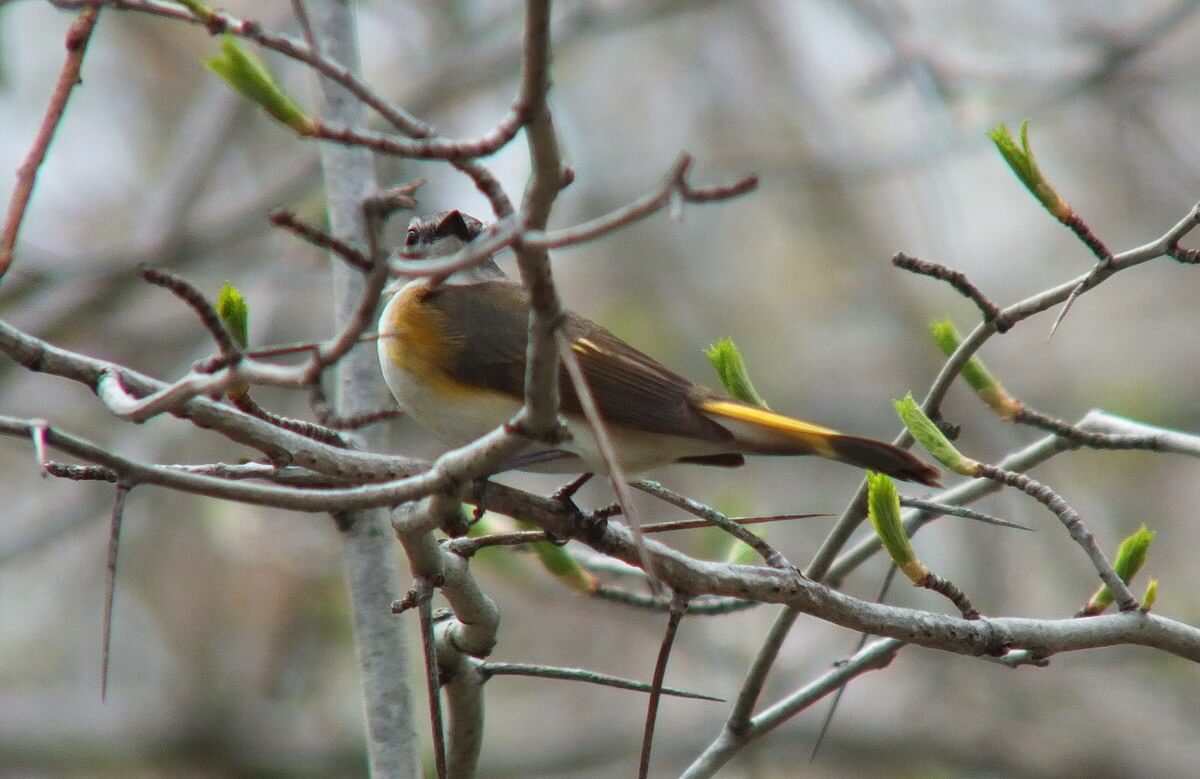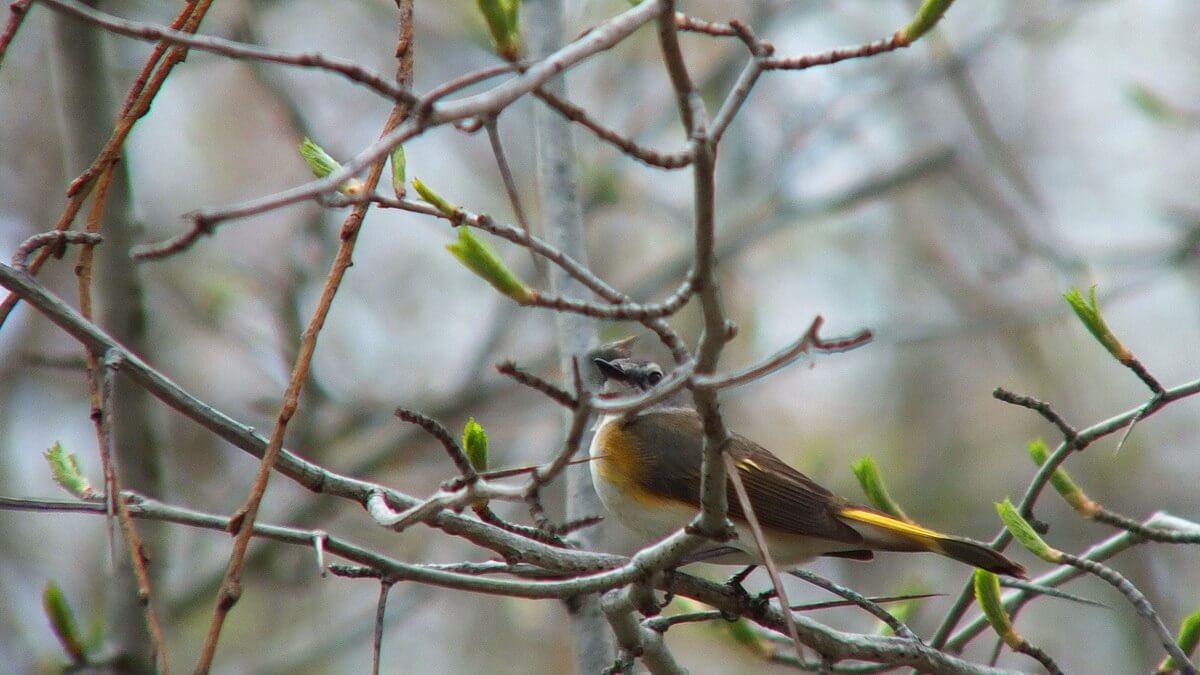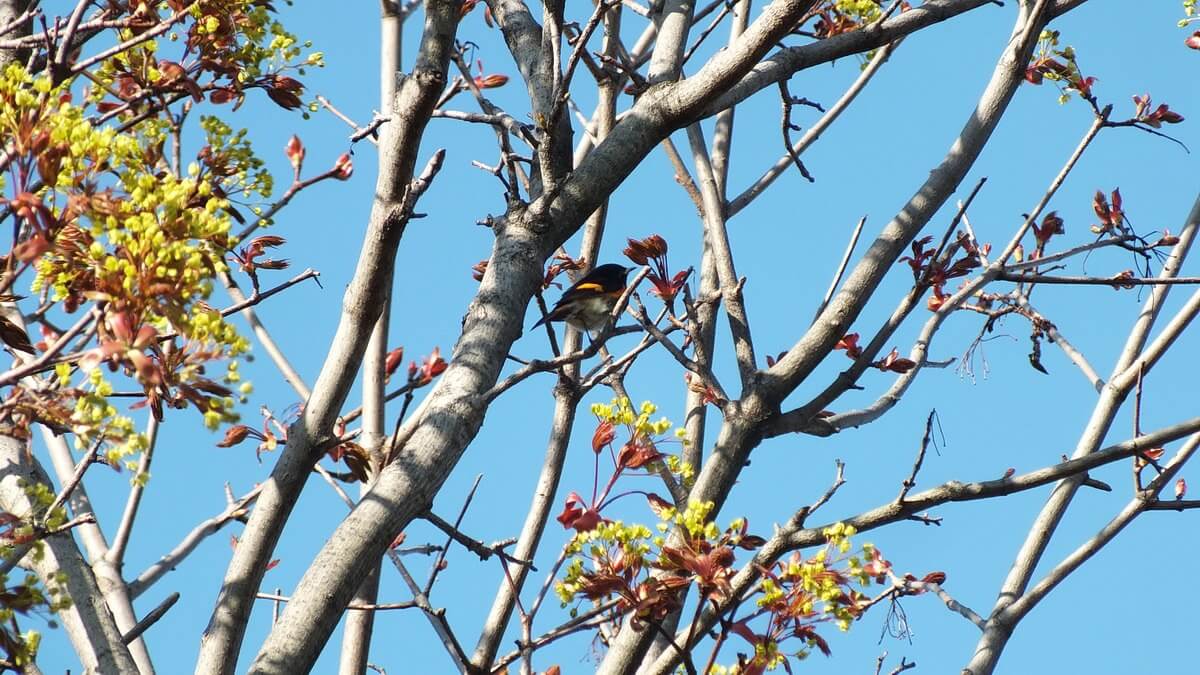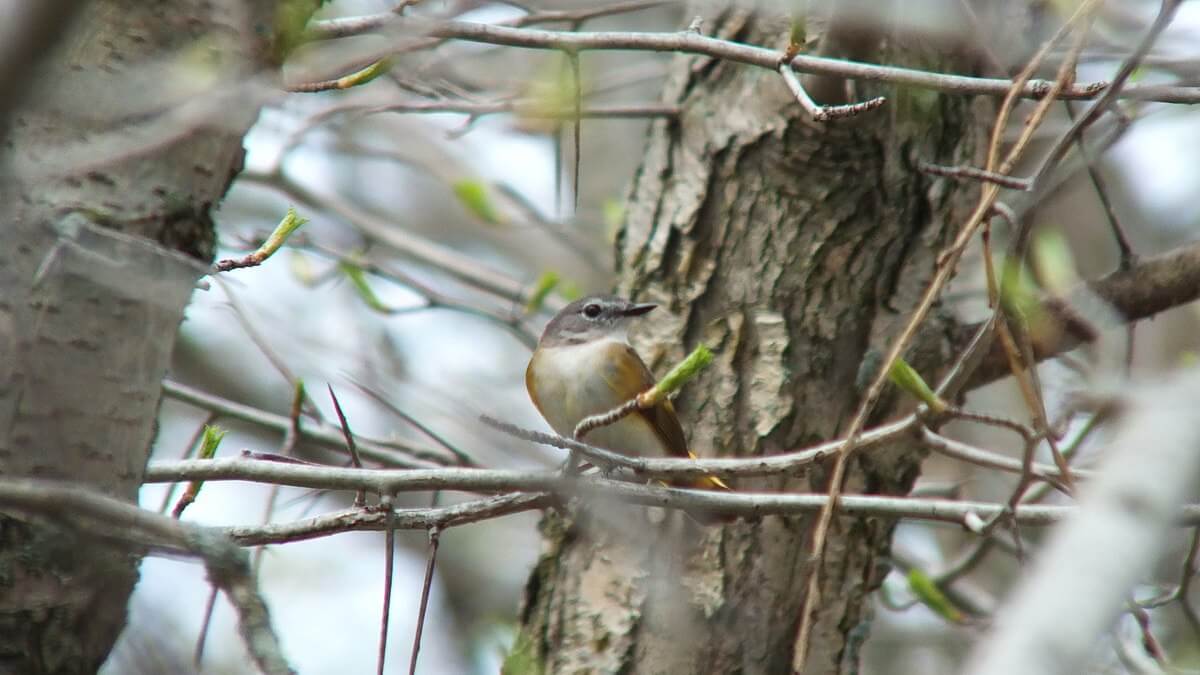American Redstart At Ashbridge’s Bay Park In Toronto
At the height of the past spring’s migration, Bob and I made a plan to check out Ashbridge’s Bay Park at the shoreline of Lake Ontario in Toronto. Hundreds of sightings had been reported there the previous week, so we were up much earlier than usual and on site in the parking lot before the sun’s rays were much above the horizon. It was fairly late in the morning, however, when we discovered this female American Redstart (Setophaga ruticilla) in the middle of a dense thicket of trees.
It was earlier in the morning that I spotted a male American Redstart. Even before Bob locked the car, I had made my way across the adjacent grassy area because I noticed a birdwatcher with his camera trained on the top of a tree. The good thing about birdwatchers is that, for the most part, they are willing to reveal what it is they are looking at and point you in the right direction. Such was the case with the Redstart. With colourful leaves and flowers beginning to emerge on the trees, and deep shadows cast by the branches, I was apt to have missed the American Redstart all together.
On that gorgeous, sunny Sunday morning, dozens of birdwatchers were in the area, which meant more eyes on a wider area of the park and a better chance of locating some of the warblers and other songbirds that were recharging their batteries after crossing the wide expanse of Lake Ontario. After our first circuit of the trails along the fringe of the park, we were returning towards the entrance when we saw the telltale stance of a birdwatcher who is onto something; she was bobbing and staring into a dense area of bushes.
Bob and I hustled over to join her, but in fact, whatever bird she had spotted just flew away. It was Bob’s keen eye that pinpointed this female American Redstart in the same thicket. We had never come across one of these birds before. The plumage of the female is smoky grey on the head with a dark grey tail and olive-grey back and wings. The lovely yellow feathers appear on the sides, wings and tail.
A breeding male, on the other hand, is jet black, and where a female is yellow, the male has bright patches of reddish-orange. Redstarts use their vivid patches of orange or yellow feathers to great advantage. When foraging for insects, the birds appear to startle their prey by spreading their tail and wings to expose the brilliant flashes of colour. Insects, in their surprised state, take flight from the foliage making it easier for the birds to snatch them up.
Usually American Redstarts are very lively and hop about tree branches nonstop in search of insects, but the female we had in our sights just perched at length hidden in amongst the trees. The weather was about to take a turn for the worse. Thunder was rumbling in the distance, and the western sky had begun to fill in with heavy dark clouds. Maybe the female was assuming a protected perch in preparation for the deluge. In any case, Bob and I were thrilled to have had such a good opportunity for observation. The male was not so cooperative, but there is always the next time.
Frame To Frame – Bob and Jean






